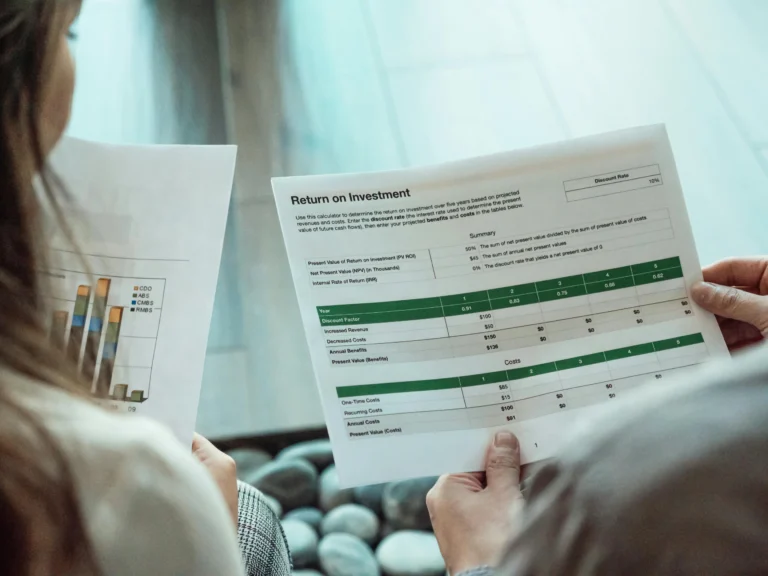Beyond the Headlines: Unveiling the True Cost of Securities Fraud

Securities fraud is a formidable financial sector issue with far-reaching implications for individual investors and the broader market landscape. By misleading stakeholders egregiously, unscrupulous entities undermine the foundations of trust and transparency that sustain market operations. Grasping the core concept of securities fraud is pivotal for anyone participating in the financial markets, whether novice investors or seasoned professionals. It’s critical to identify such deception and understand its consequences, as well as the measures to deter such malpractices and restore investor confidence.
Contents
- Key Takeaways
- What is Securities Fraud?
- Common Signs of Securities Fraud
- The Role of Regulatory Bodies in Preventing Securities Fraud
- The Long-Term Consequences of Securities Fraud for Markets
- How Investors Can Protect Themselves from Securities Fraud
- The Economic Impact of Securities Fraud
- Technological Tools for Detecting and Preventing Securities Fraud
Key Takeaways
- Securities fraud includes illegal activities ranging from misrepresentation to complex insider trading schemes.
- Understanding typical warning signs of securities fraud can significantly empower investors to safeguard their assets.
- Regulatory bodies like the SEC are essential for monitoring compliance and enforcing laws to protect market integrity.
- Advancements in technology are enhancing the capacity to detect and prevent securities fraud effectively.
What is Securities Fraud?
In the complex tapestry of financial markets, the term “securities fraud” reverberates with a gravity that extends far beyond its mere legal definition. It’s a question that resonates deeply, demanding scrutiny beyond the headlines and soundbites. So, what is securities fraud? It’s a query that delves into the heart of financial integrity, revealing a landscape rife with deception, manipulation, and betrayal.
Beyond the surface, securities fraud represents a breach of trust, a violation of the very fabric that underpins the financial system. But peeling back the layers reveals a darker truth—a realm where individuals exploit loopholes, manipulate markets, and deceive investors for personal gain. It’s a world where the allure of profit eclipses ethical boundaries, leaving a trail of devastation in its wake.
Common Signs of Securities Fraud
Understanding and recognizing the warning signs of securities fraud is crucial for investor protection. Typical indicators include pressure to invest quickly, promises of high returns with little or no risk, and unsolicited investment offers, often via email or phone. Unusually consistent returns, secretive or complex investment strategies, and issues regarding documentation, such as account statement errors, could also suggest fraudulent activities. By staying alert to these signs, investors can more readily identify potential frauds before falling victim to them.
The Role of Regulatory Bodies in Preventing Securities Fraud
Regulatory bodies, particularly the U.S. Securities and Exchange Commission (SEC), are watchful guardians of market fairness. They enact and enforce regulations that help prevent securities fraud, protect investors, and maintain market order and efficiency. The SEC responds to allegations of securities fraud with thorough investigations and can impose stiff penalties on those found in violation. These sanctions, including jail time or monetary fines, highlight how seriously securities fraud is taken. Regulatory authorities guarantee transparent and accountable company governance by encouraging disclosures and enforcing regulations.
The Long-Term Consequences of Securities Fraud for Markets
Securities fraud isn’t just a momentary blip on the financial radar. Its repercussions stretch beyond the initial shockwaves, leaving lasting scars on markets and investor confidence. While headlines may fade, the enduring consequences of fraudulent behavior shape the trajectory of financial ecosystems for years to come.
One of the most profound impacts of securities fraud lies in its erosion of trust and confidence within financial markets. When investors perceive the game’s rules as rigged, they hesitate to participate fully. This reluctance translates into reduced market liquidity and a chilling effect on capital formation, hindering economic growth in the long run.
Moreover, the aftermath of securities fraud often triggers a regulatory response. Regulatory bodies tighten their oversight and impose stricter compliance requirements to prevent future misconduct. While these measures are intended to restore confidence, they burden market participants with increased compliance costs, stifling innovation and efficiency.
Securities fraud can also exacerbate market volatility and uncertainty. As investors grapple with revelations of misconduct, they reassess risk and adjust their investment strategies accordingly. This heightened uncertainty can increase market volatility, with broader implications for economic stability and investor sentiment.
Persistent exposure to securities fraud breeds investor skepticism and risk aversion. When fraud becomes a recurring theme, investors become wary of committing their capital to affected markets. This risk-averse behavior limits investment opportunities and constrains the allocation of capital to productive endeavors, hindering market growth in the long term.
The reputational damage inflicted by securities fraud can be significant. Companies implicated in fraudulent activities suffer lasting harm to their brand and corporate image. Shareholders may demand accountability and transparency, leading to changes in corporate governance practices and management structures that impact long-term shareholder value.
Ultimately, the long-term consequences of securities fraud extend beyond immediate losses. They impact investor outcomes and financial well-being over time, eroding confidence and hindering wealth accumulation. By understanding these enduring effects, policymakers, regulators, and market participants can work collaboratively to strengthen market integrity, foster investor trust, and mitigate the lasting impacts of fraudulent behavior.
How Investors Can Protect Themselves from Securities Fraud
Investors are not powerless against securities fraud; education plays a vital role in self-defense. By understanding the mechanics of different types of investments, scrutinizing investment opportunities, and maintaining a healthy skepticism, they can significantly mitigate the risk of falling prey to fraud. Investors should verify the credentials of brokers and advisors and insist on clear communication regarding investment risks and strategies. Additionally, staying informed through trusted educational resources can bolster their defenses against fraudulent schemes.
The Economic Impact of Securities Fraud
When fraudulent activity distorts the market, the effects ripple throughout the economy, creating inefficiencies and misallocations of resources. Securities fraud can discourage investment, skew corporate valuations, and drain economic growth, impacting employment, innovation, and the competitiveness of markets. The cost of fraud extends beyond direct financial losses to include regulatory costs, damage to global financial hubs’ reputations, and the broader implications for economic development. Effective action against securities fraud requires cooperation across sectors and international borders to maintain transparent, efficient, and reliable market environments.
Technological Tools for Detecting and Preventing Securities Fraud
Advancements in technology are bolstering the fight against securities fraud. Machine learning algorithms, big data analytics, and blockchain technology are at the forefront of identifying unusual patterns and behaviors that hint at fraudulent activity. These tools offer the ability to process vast amounts of data at incredible speeds, providing previously unattainable insights. As a result, timely fraud detection is becoming more probable, potentially preventing scams from proliferating. Regulatory bodies and private firms are incorporating these advanced systems into their oversight and compliance measures, making it increasingly difficult for fraudsters to circumvent the securities laws and exploit unsuspecting investors.
Also Read: How The UK Govt Tackles Tax Evasion and Tax Fraud?





